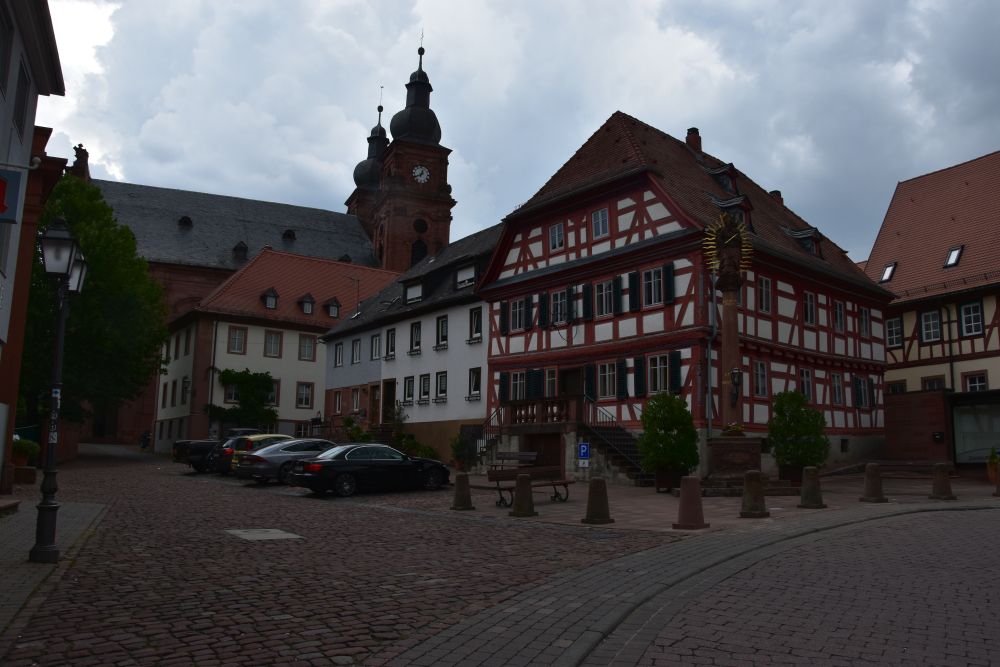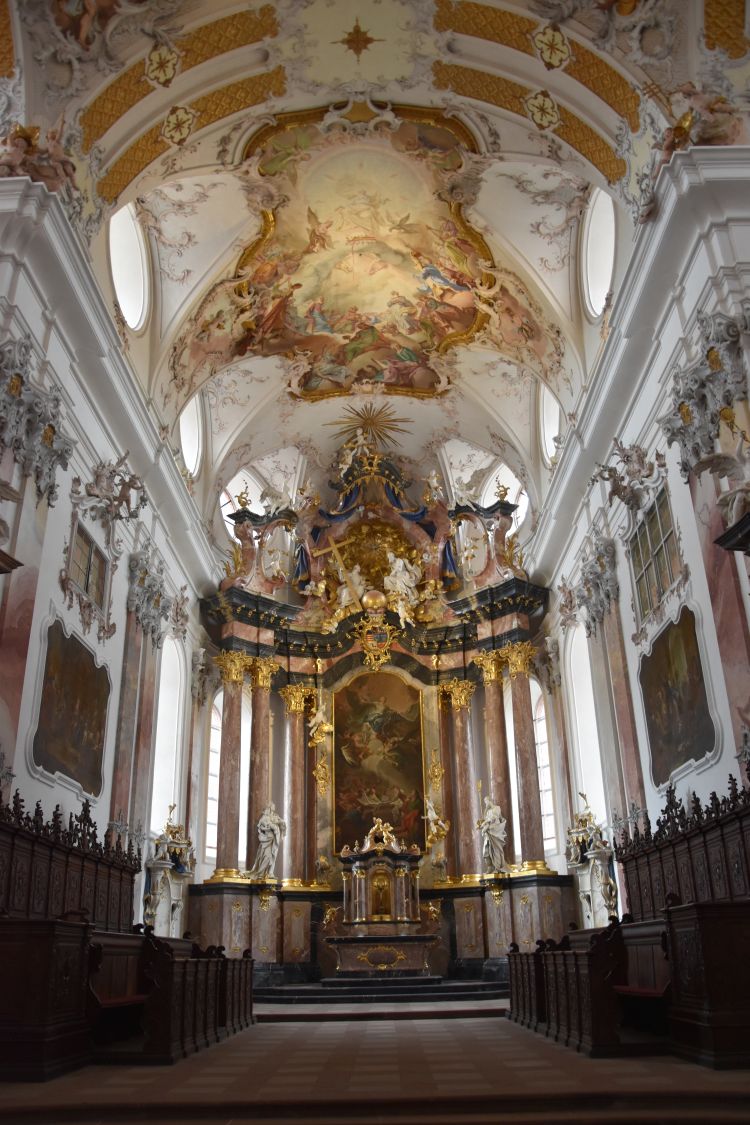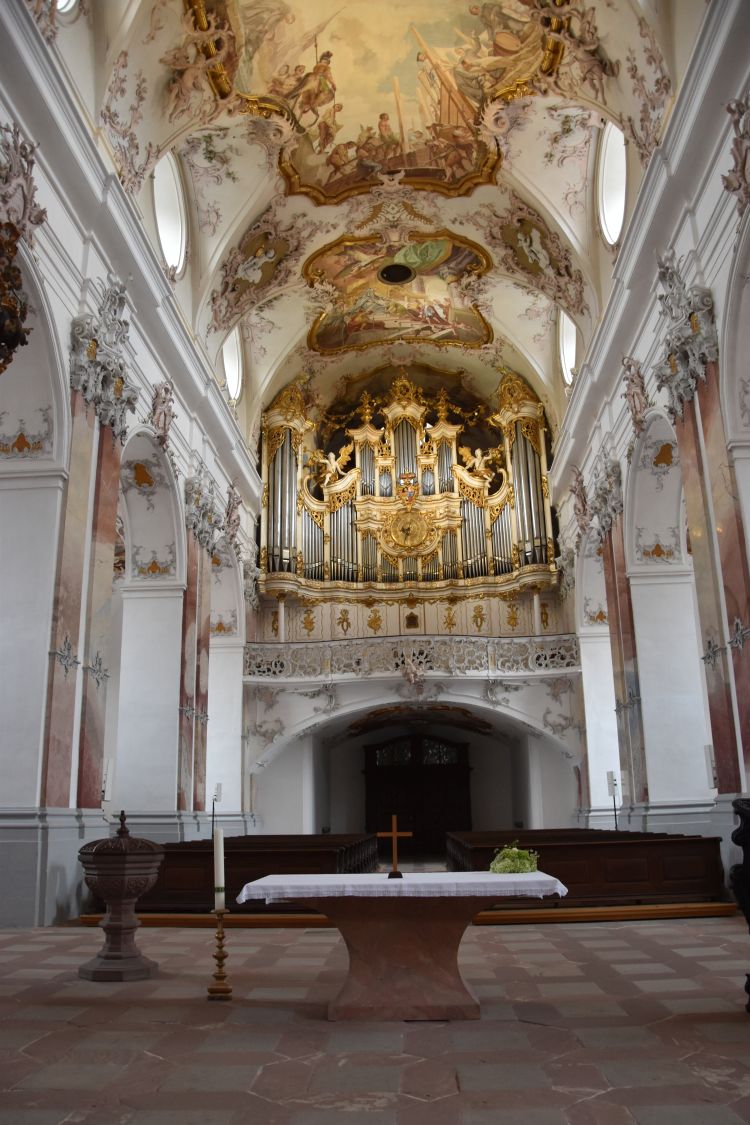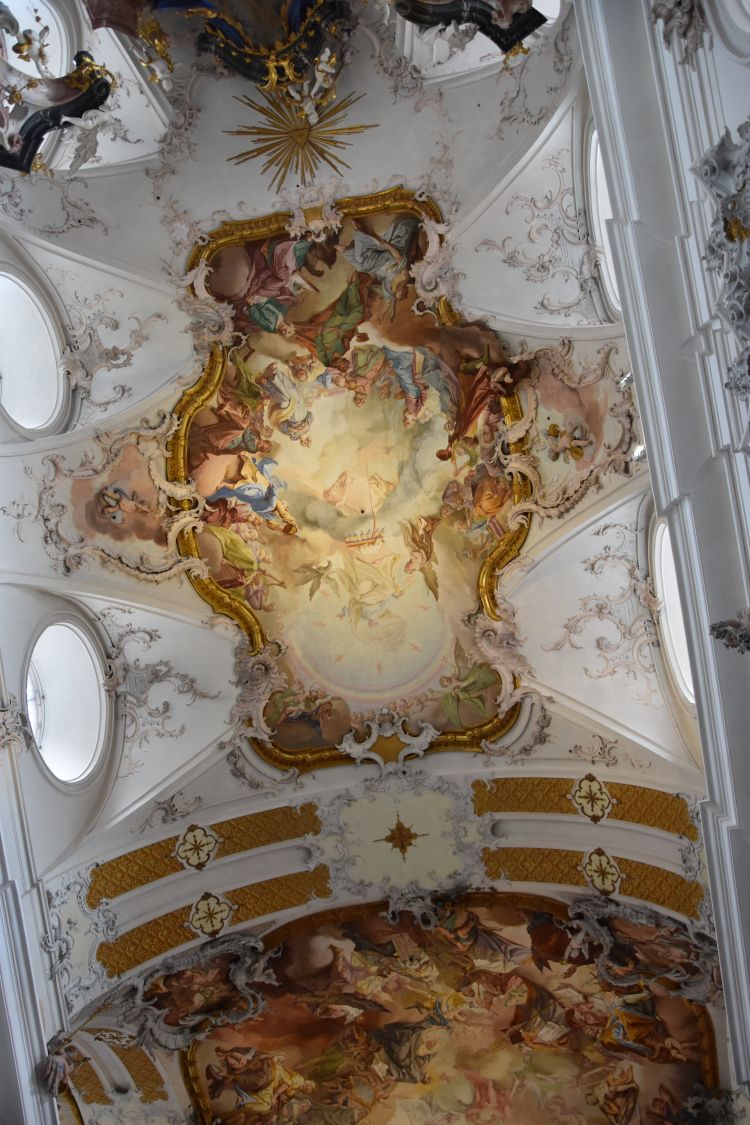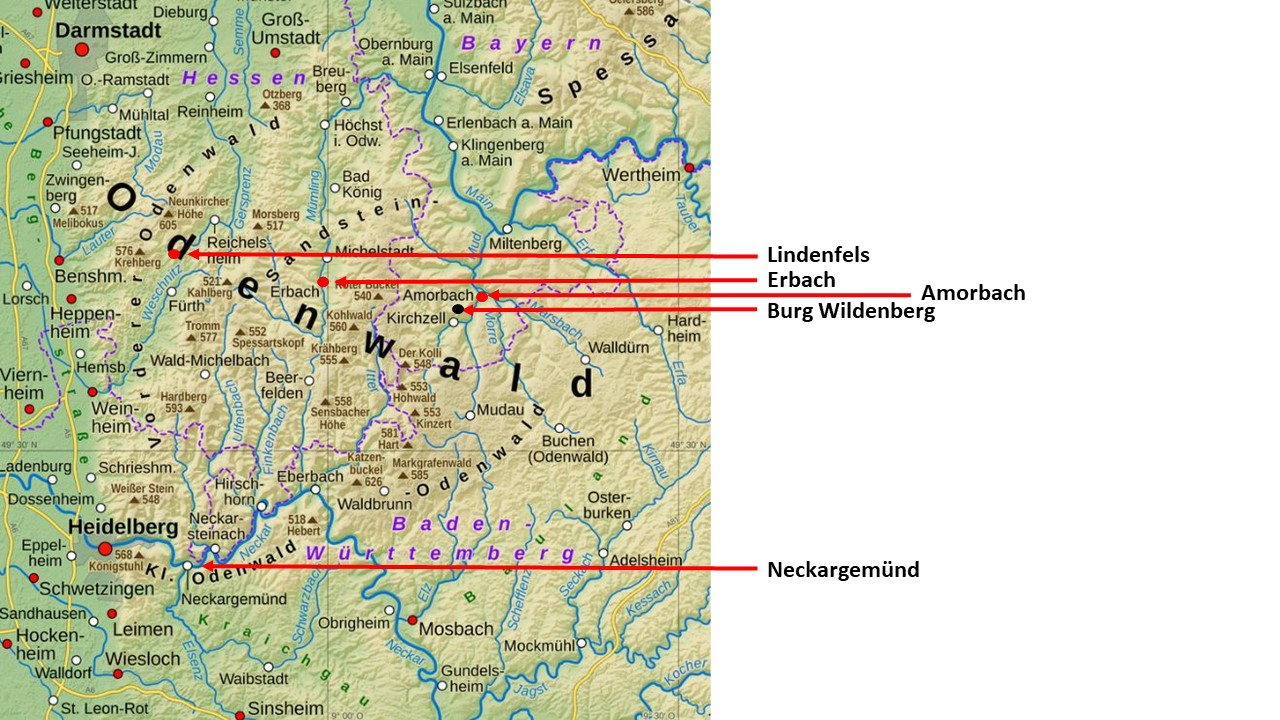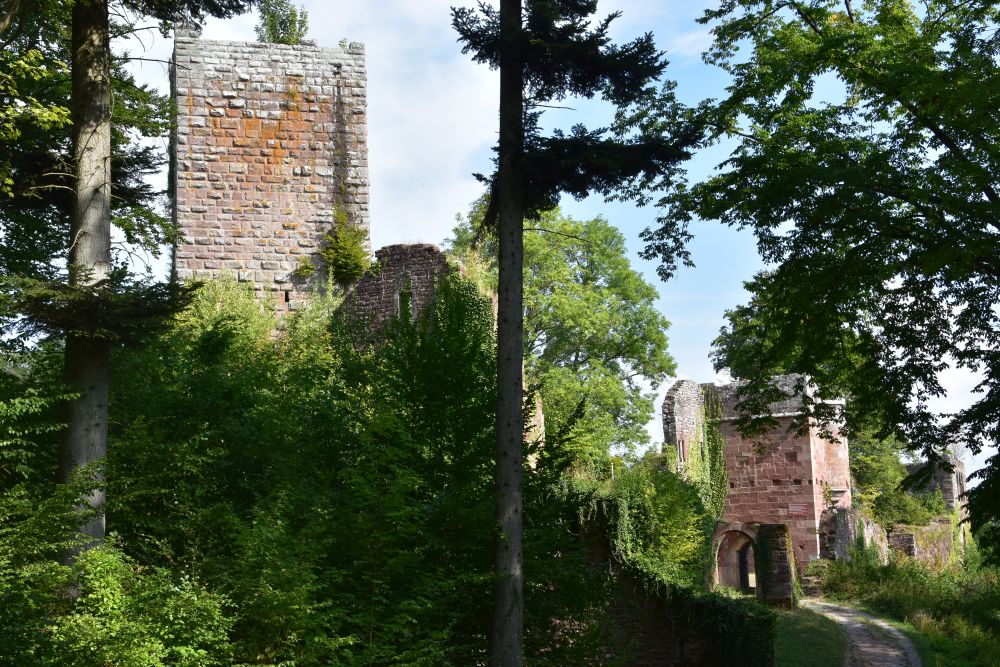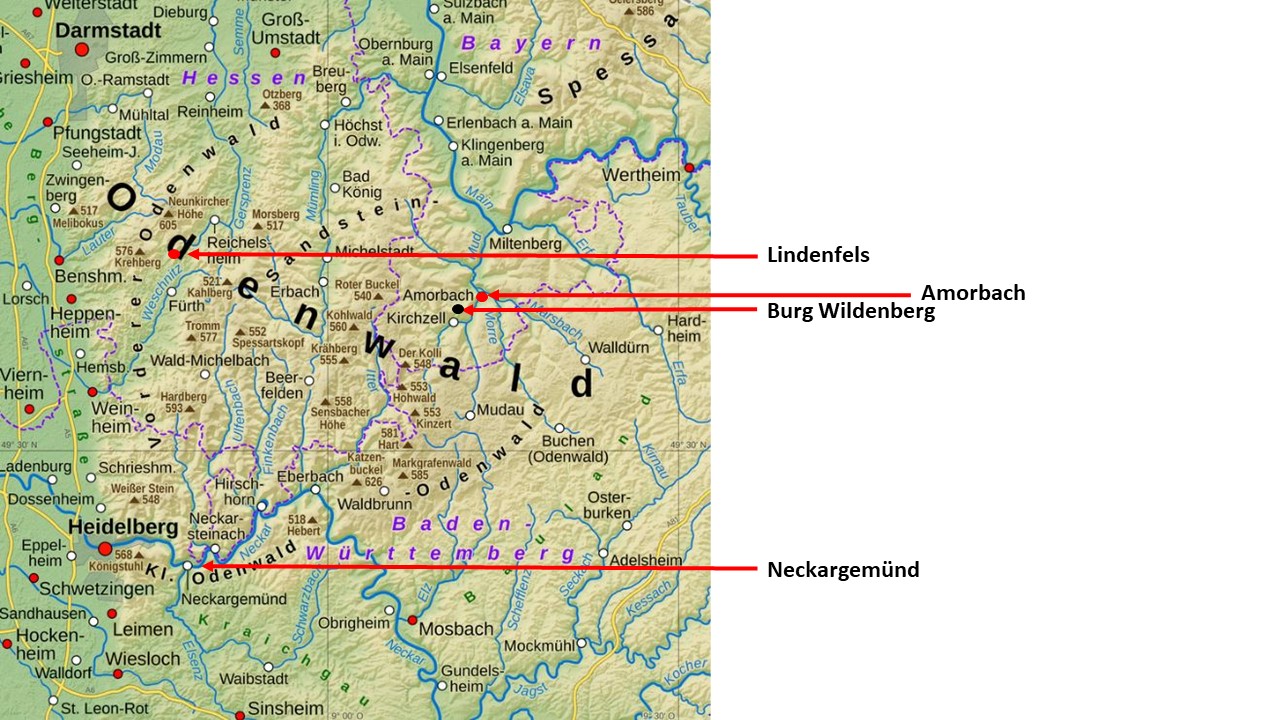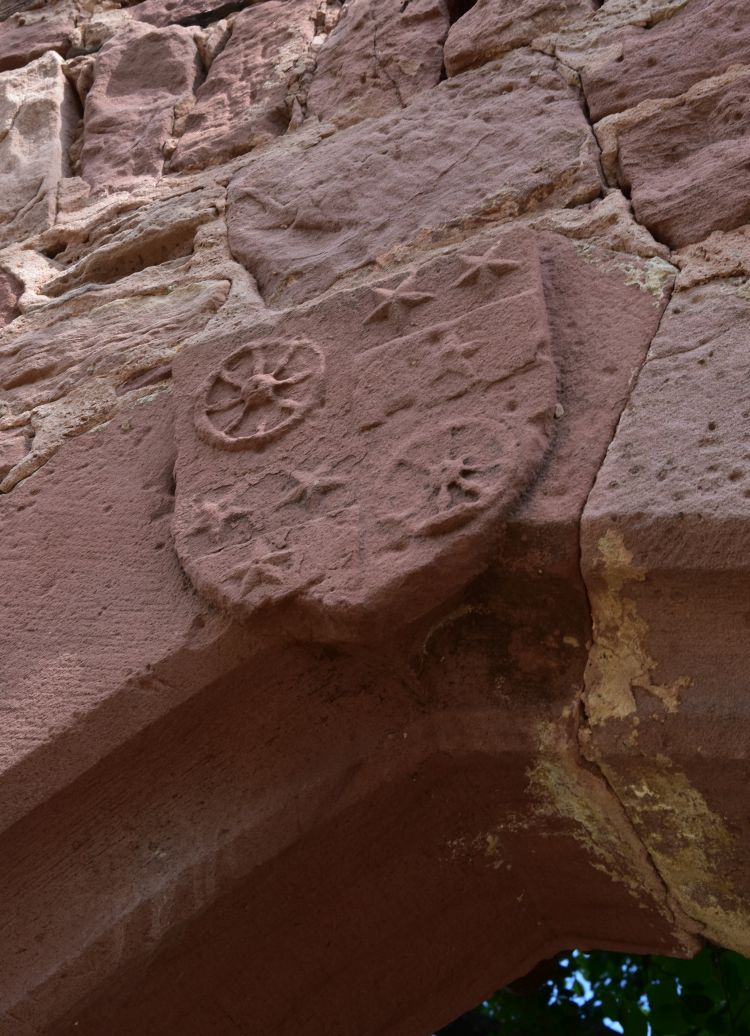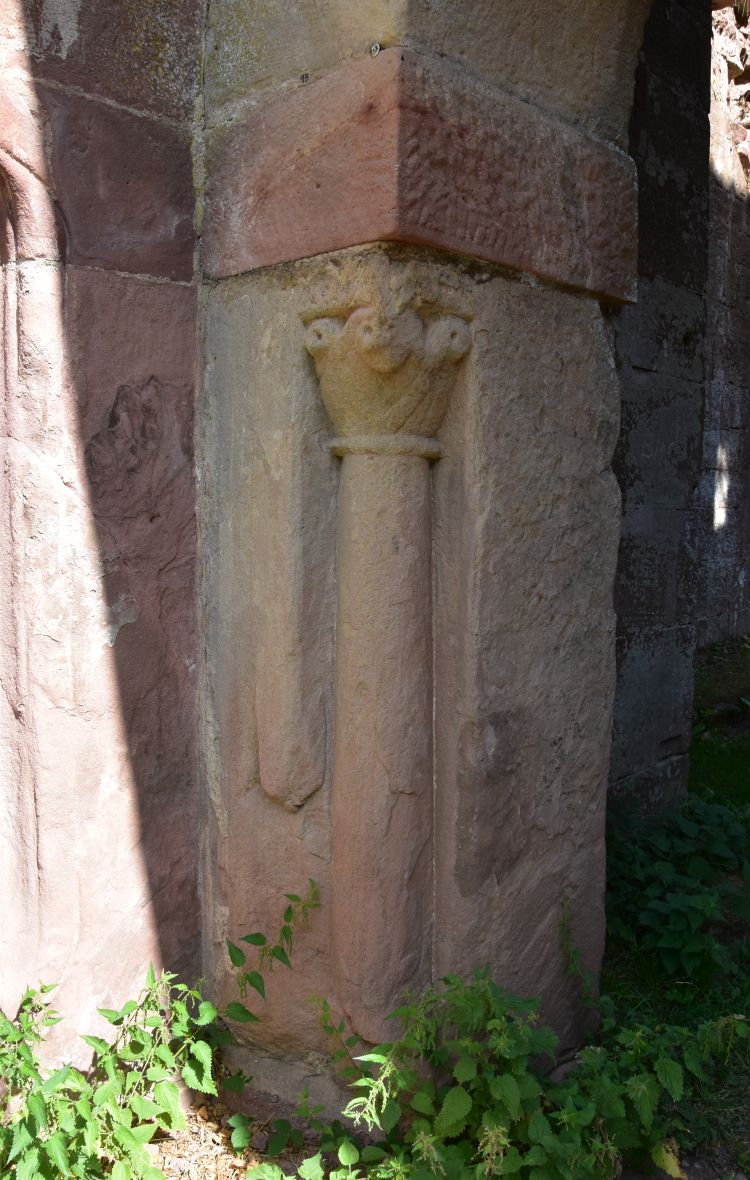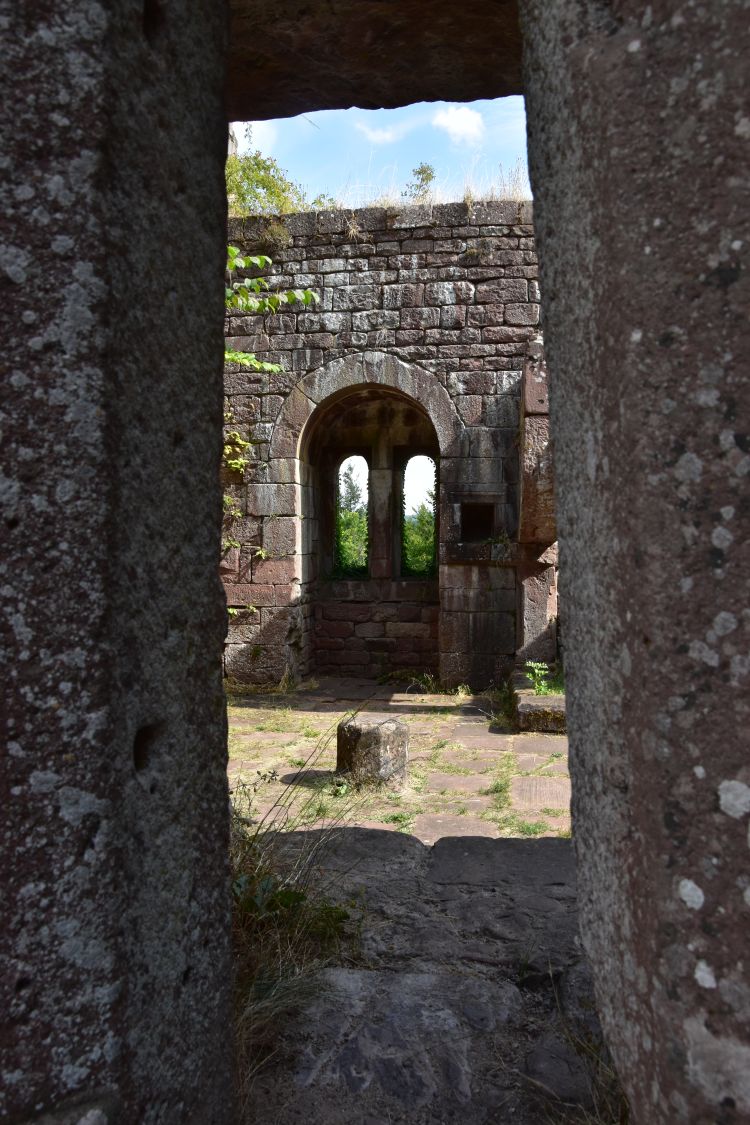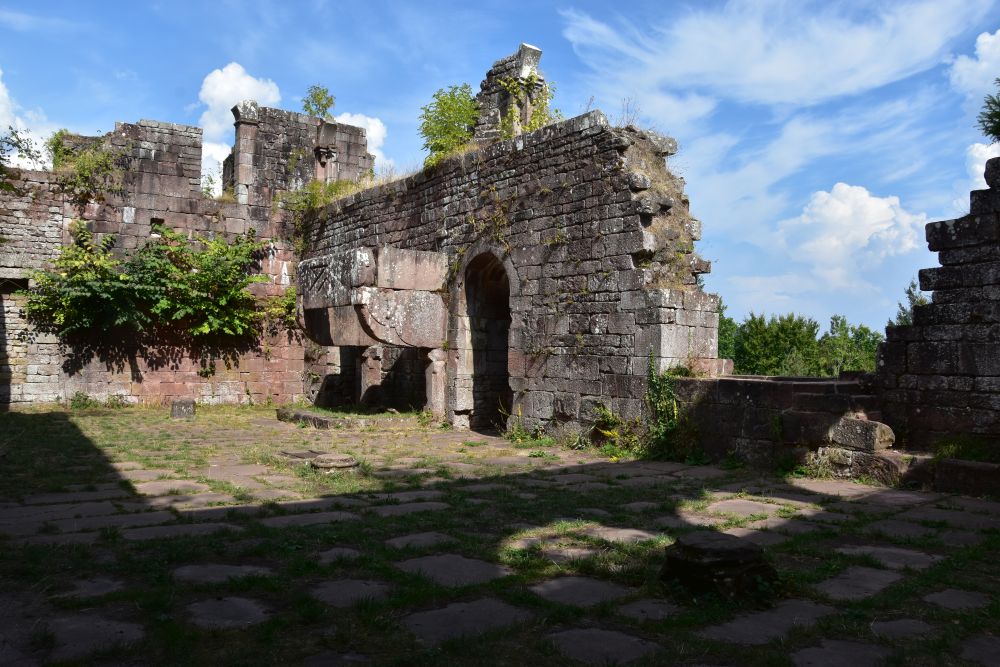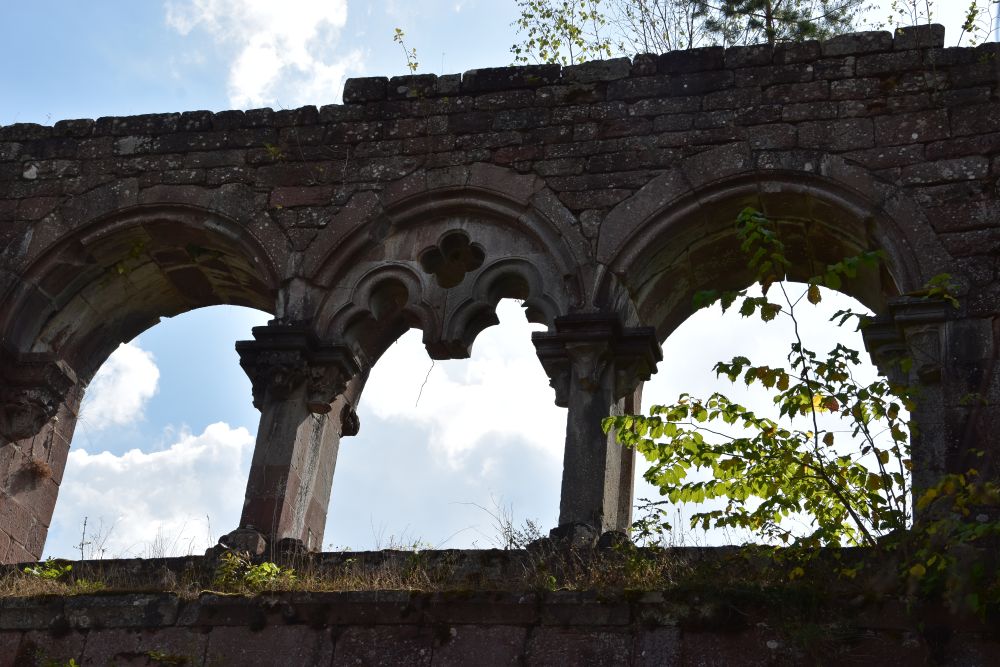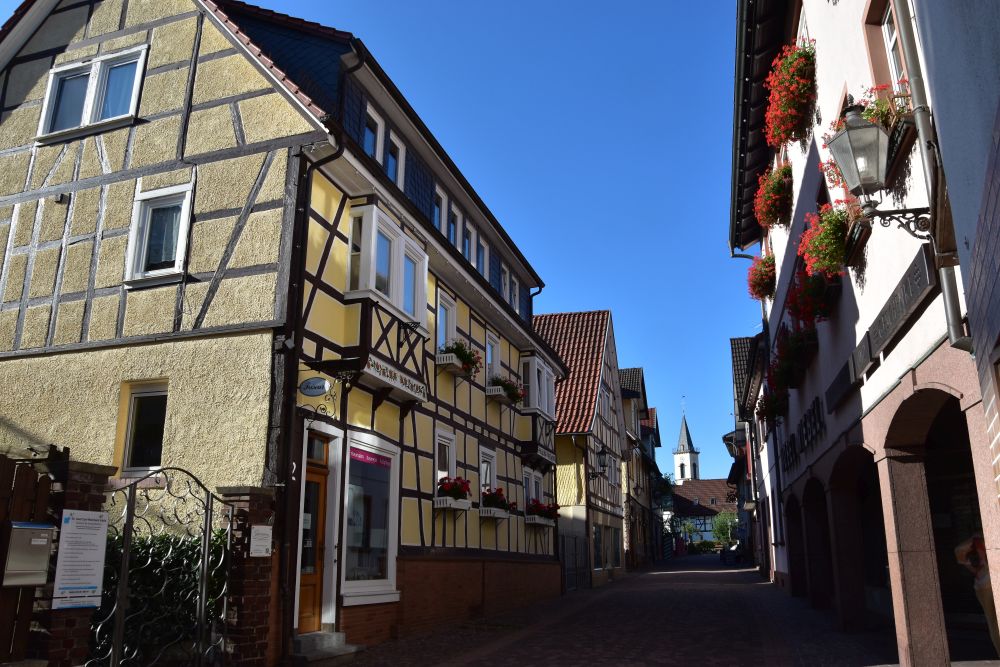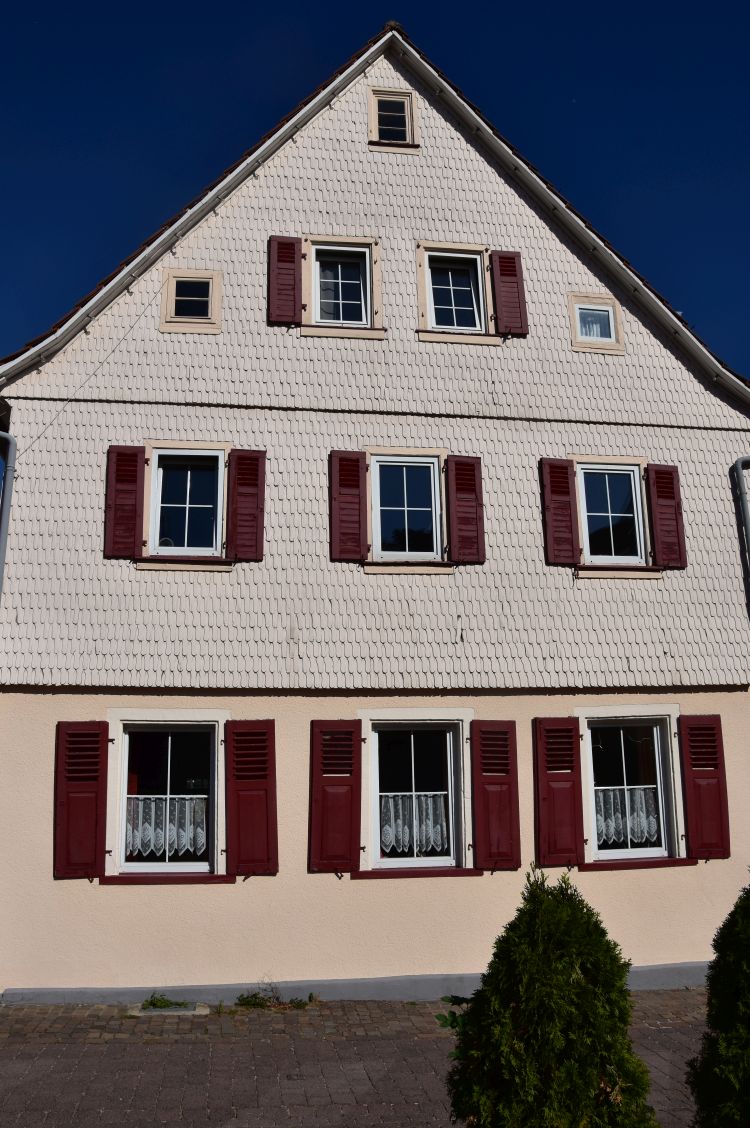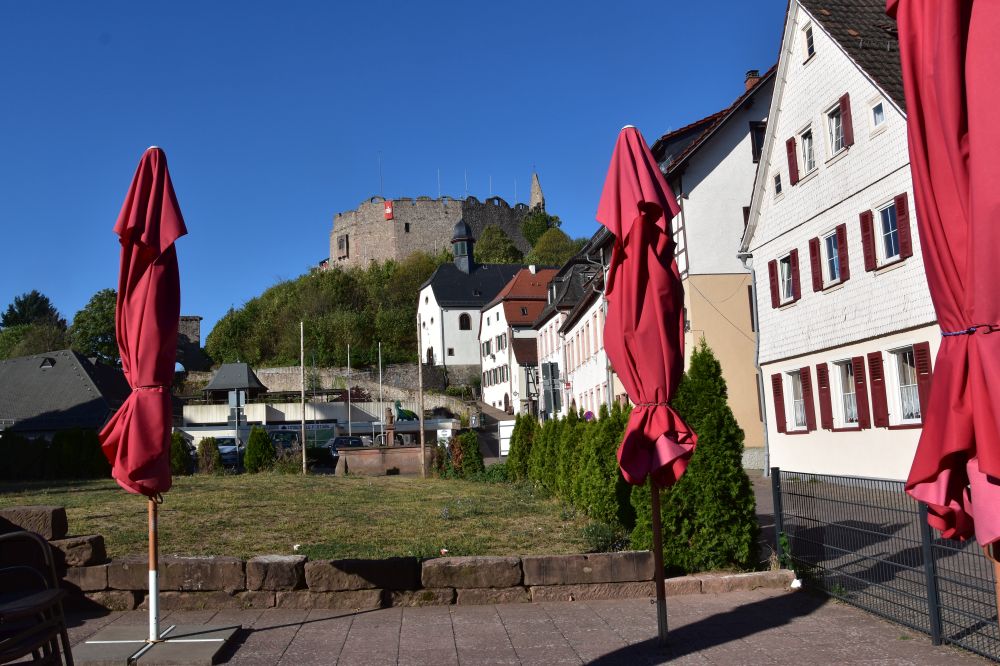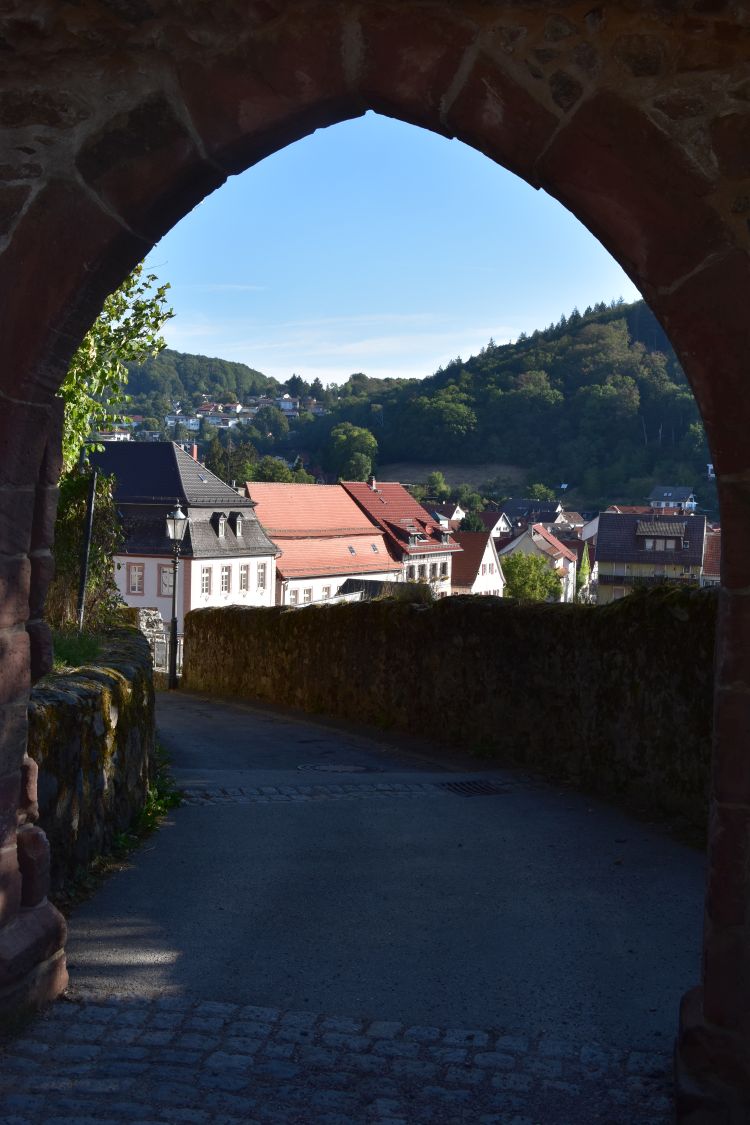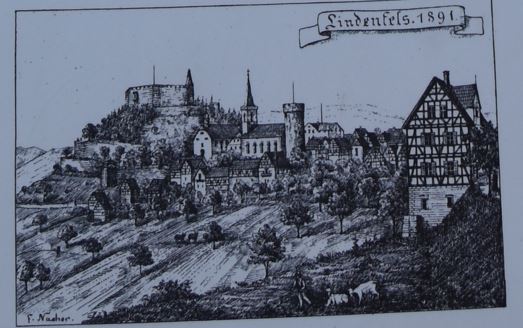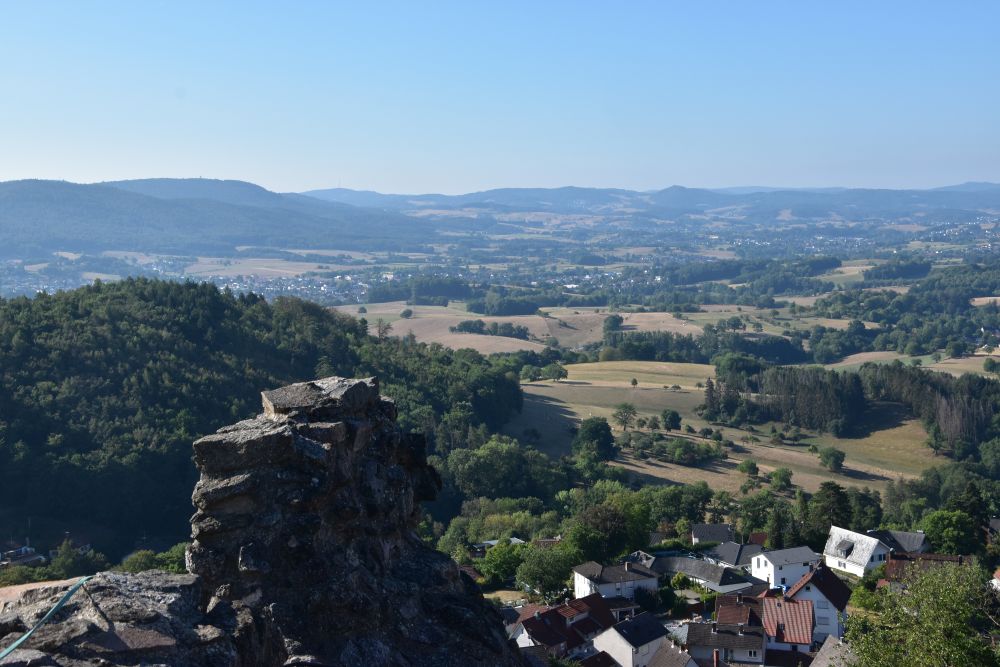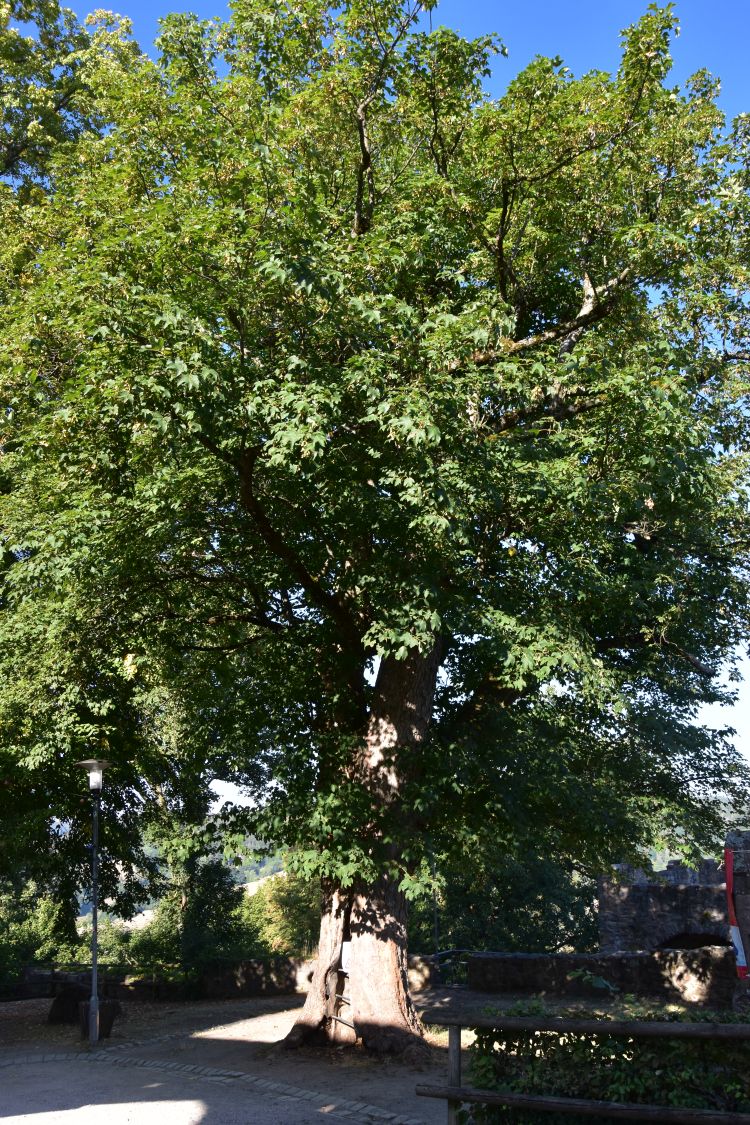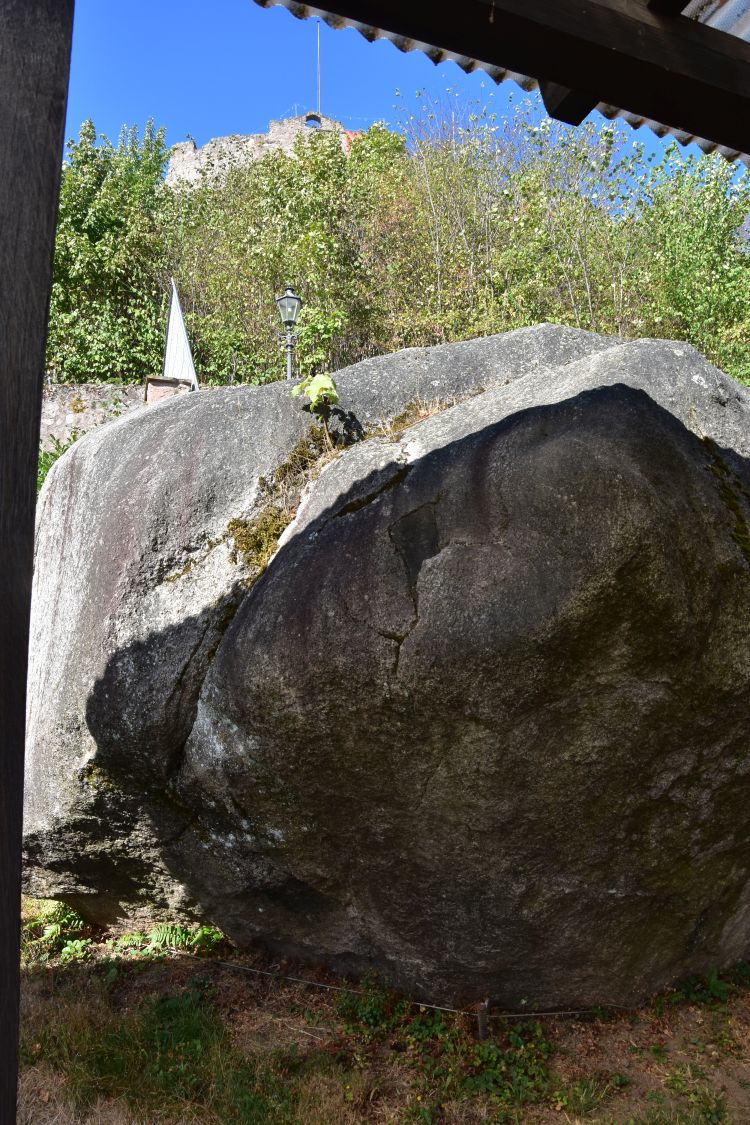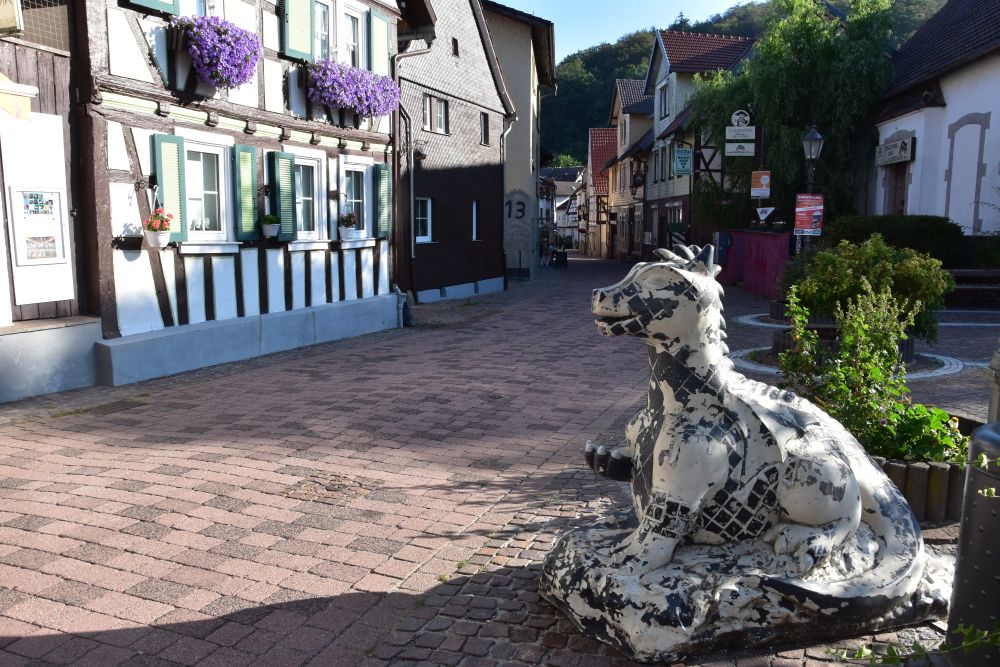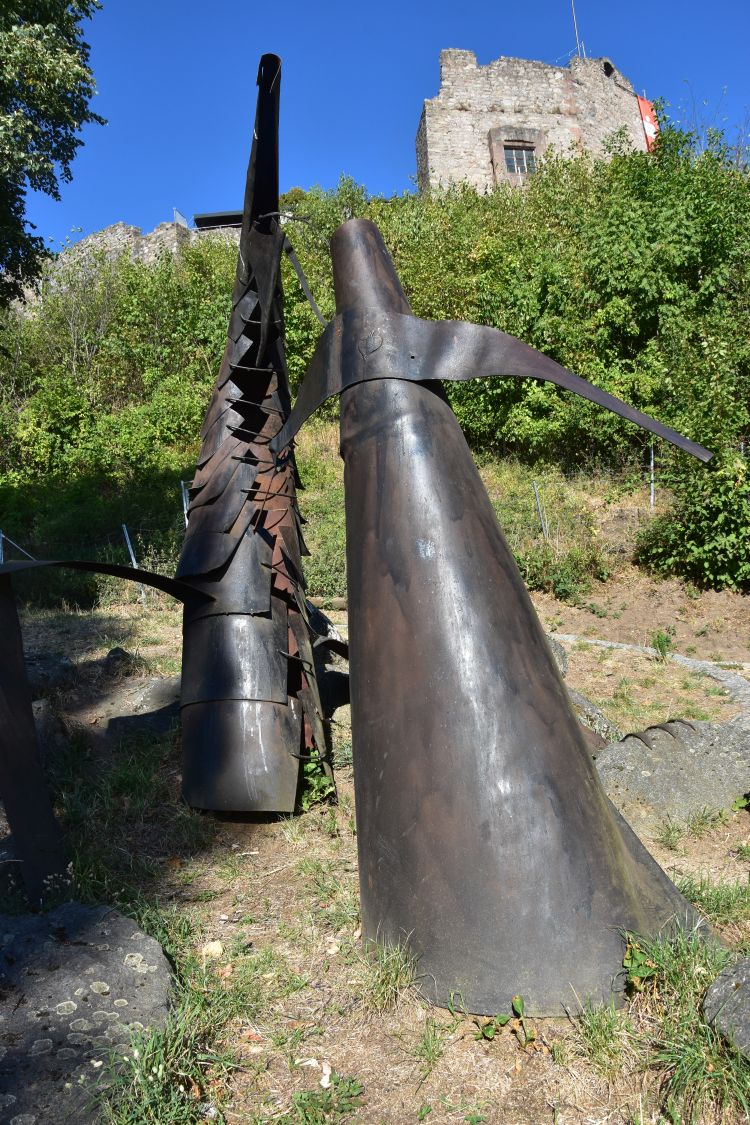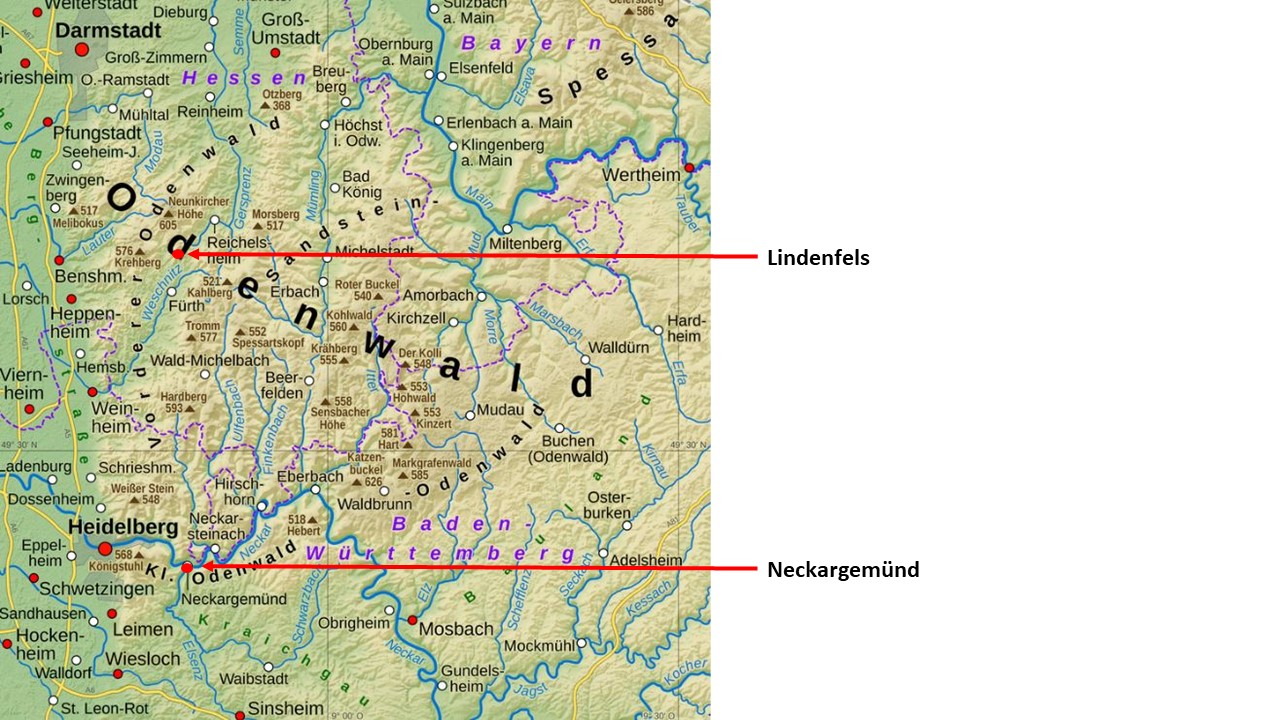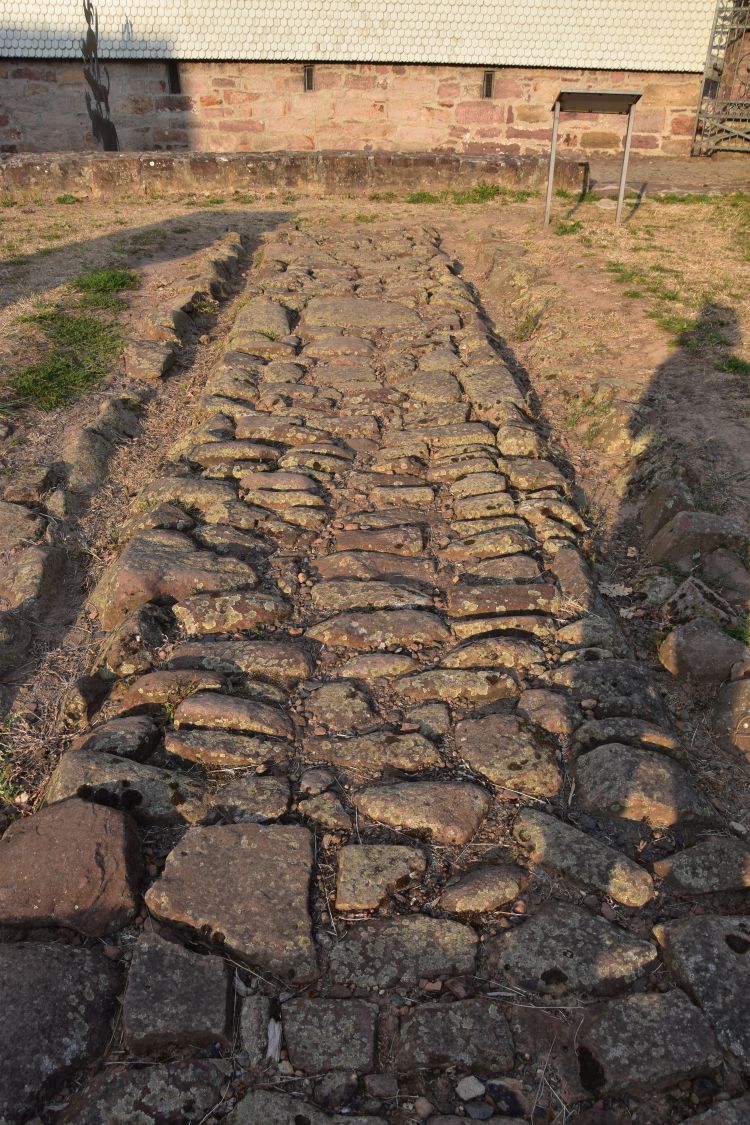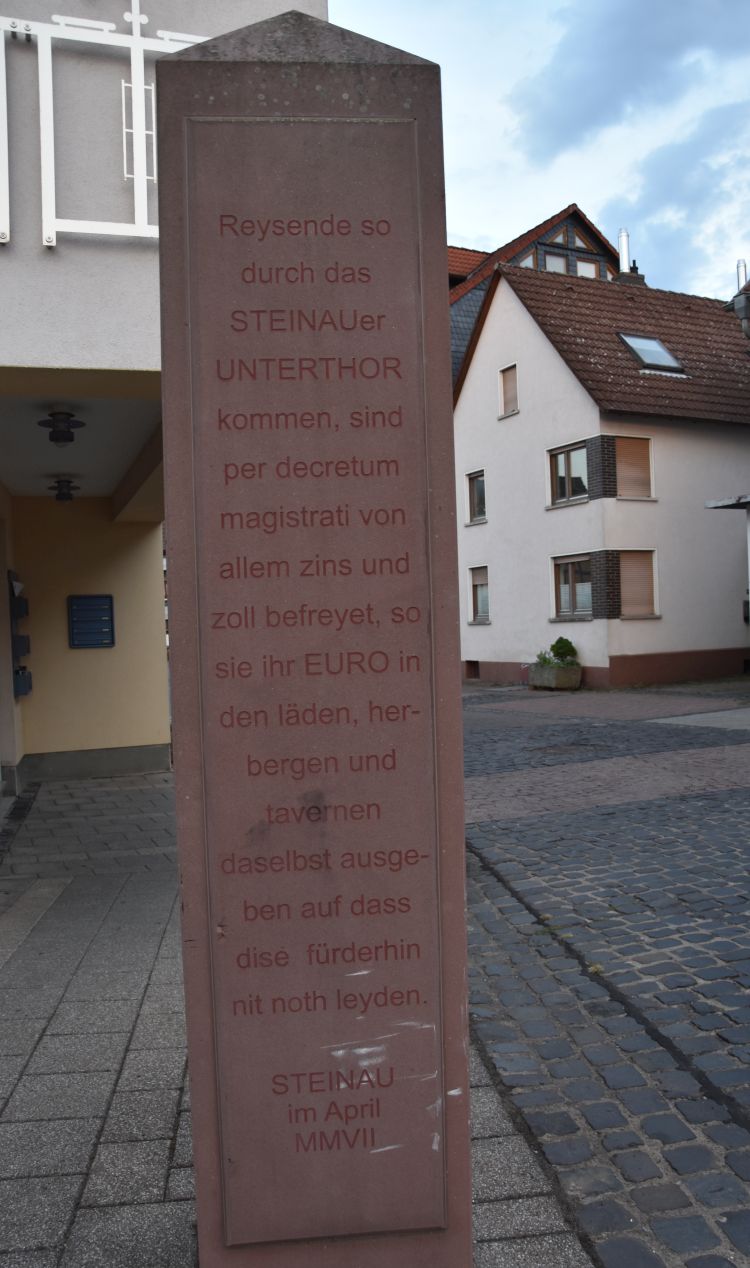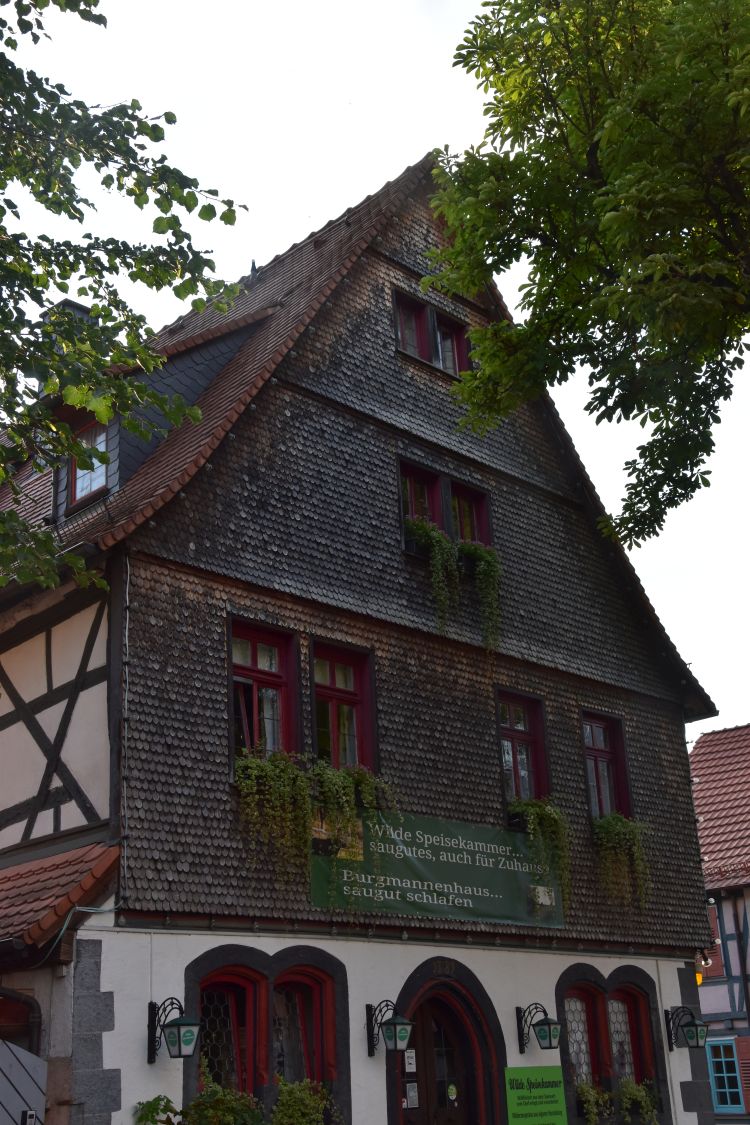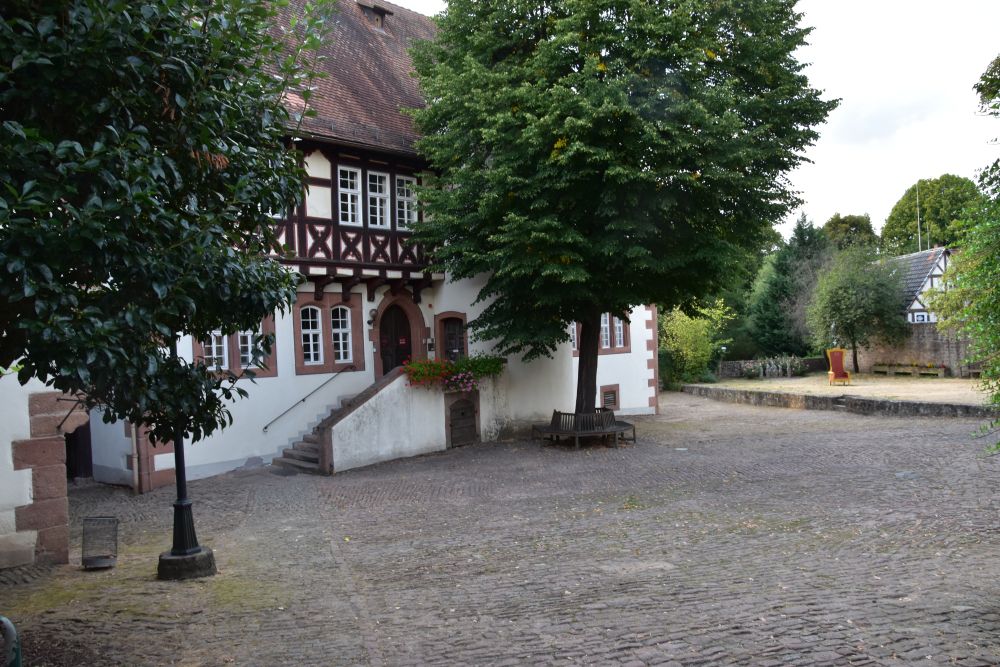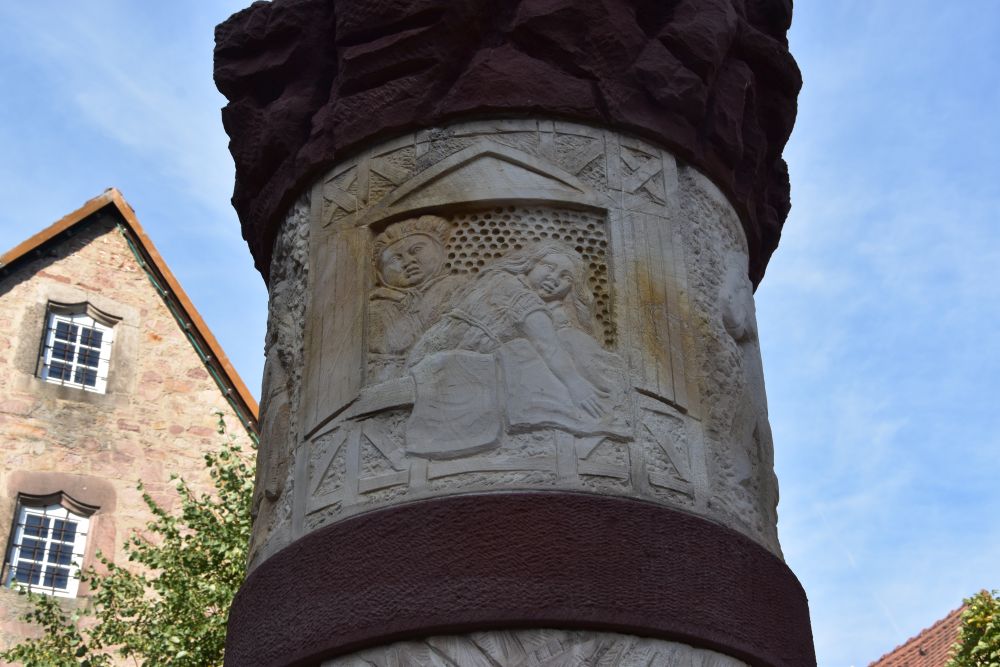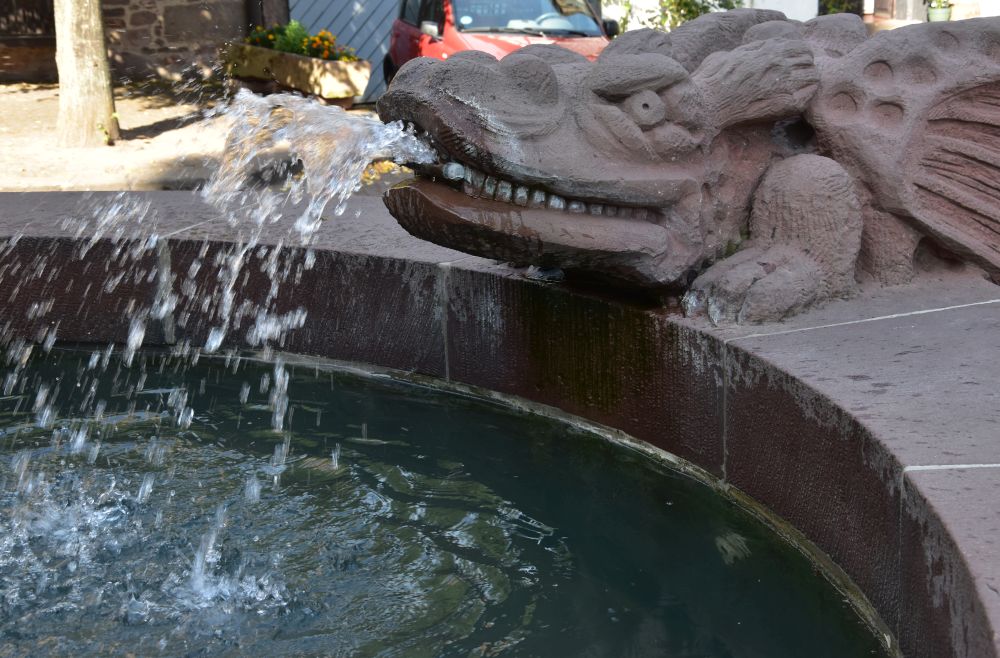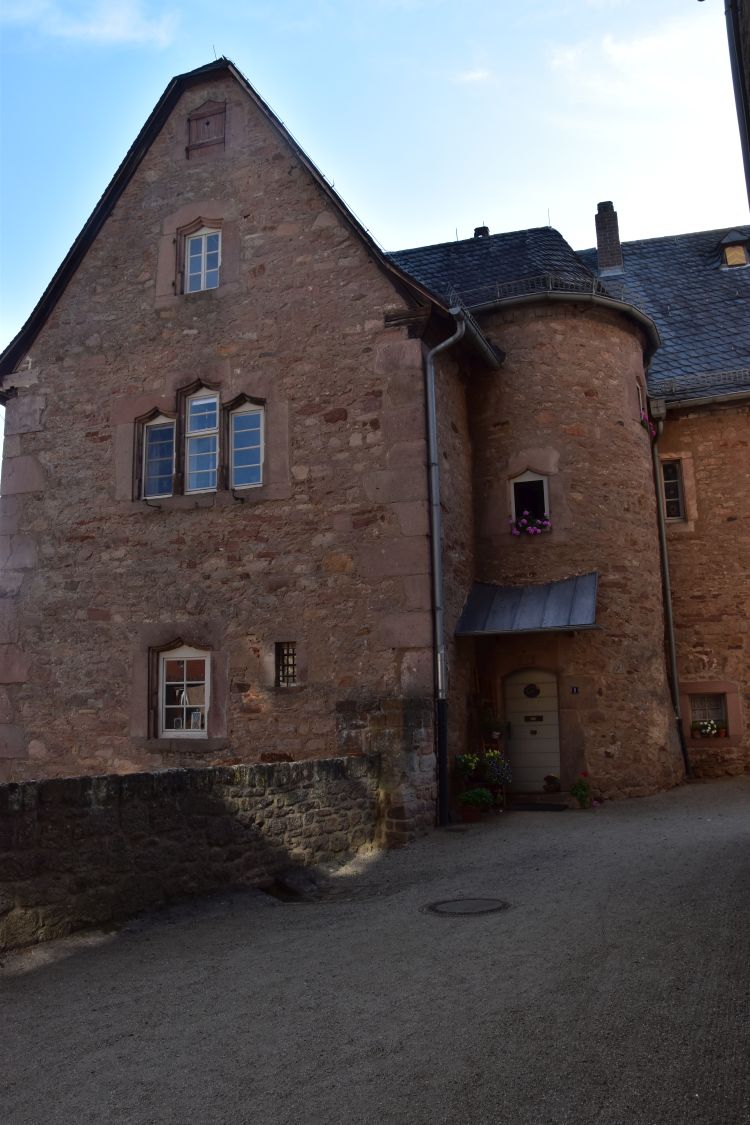After having climbed up to see the Castle Wildenberg, we visit Amorbach and its Baroque-Rococo Abbey Church.
Amorbach is a small medieval city in the Sandstone-Odenwald
Known in the 10th century as Amerbach or Amerbach, the settlement evolved around the Benedictine monastery and became a town in 1253. We are in the Sandstone-Odenwald; dark red sandstone bricks characterize the buildings, such as the catholic church St. Gangolf, built in the 18th century.
The City Hall, covered with slates, is from 1479. I could not find out who the man is that sits on the bench in front of the City Hall.
Next to the City Hall we have lunch in the Ristorante Pizzeria di Marina.
Around us are medieval houses. The Internet contains a long list of notable buildings at Amerbach.
On the way to the Abbey Church, we come across the former monastery mill (Klostermühle) that was built in 1448 as the inscription above the gate says. It was the mill and bakery for the monastery. Now it is an inviting coffee bar.
The Amorbach Abbey Church – have we seen a cock on the belfry?
Abbeys are catholic institutions, and I have never seen a cock on the belfry of a monastery church. I rub my eyes. This IS a cock. Let us look into the history of the abbey to understand, how the cock ended up on this belfry.
The Abbey of Amorbach is from the 8th century. It was one of four abbeys that were founded in Carolingian times to bring Christianity to the Odenwald. In 1446, the abbey acquired the relics of Saint Amor and Saint Landrada and became a pilgrimage site. In 1740-1744, the Abbey Church was reconstructed, whereby the Romanesque west towers from the 12th century were incorporated. 60 years later, in 1803, the abbey was dissolved and given to the duke of Leiningen as a compensation for the lands left of the Rhine that they had lost to the French. The principality of Leiningen was founded, and the abbey became the residence. The noblemen of Leiningen originated from Palatine near Dürkheim, and they were protestant. They handed the Abbey Church over to the (Protestant) parish of Amorbach. The principality of Leiningen ceased to exist already in 1806. It was passed over to the Grand Duchy of Baden (Grossherzogtum Baden) and in 1816 to the Kingdom of Bavaria. The noblemen of Leiningen still own the abbey today.
Now, we know, why there is a cock on the belfry of the Abbey Church: The church has become Protestant and many Protestant Churches show the cock on their towers.
This is the bird’s eye view of the abbey that I found, when visiting the church.
Inside the church, we find an overwhelmingly rich decoration – late Baroque/early Rococo.
Six red marble columns frame the altar picture that shows Mary arriving in heaven. Above the black beams is the Holy Trinity. The statues of Mary’s parents, Joachim and Anne, flank the altar.
The iron screen was made in 1748-50.
The organ was set up in 1782 by members of the organ-building Stumm family; it was at that time the largest organ in the world.
In front of the organ is the plain protestant communion table.
The frescoes mainly tell the story of Saint Benedict.
Impressed by the rich decoration, we leave this place full of history. Our next target is the ivory town Erbach, not far from here.
Sources:
- Wikipedia entry for Amorbach https://de.wikipedia.org/wiki/Amorbach
- Wikipedia entry for Amorbach Abbey https://en.wikipedia.org/wiki/Amorbach_Abbey
- Wikipedia entry for Rathaus (Amorbach) https://de.wikipedia.org/wiki/Rathaus_(Amorbach)
- Wikipedia entry for St. Gangolf (Amorbach) https://de.wikipedia.org/wiki/St._Gangolf_(Amorbach)
- Wikipedia entry for the noblemen Leiningen https://de.wikipedia.org/wiki/Leiningen_(Adelsgeschlecht)
